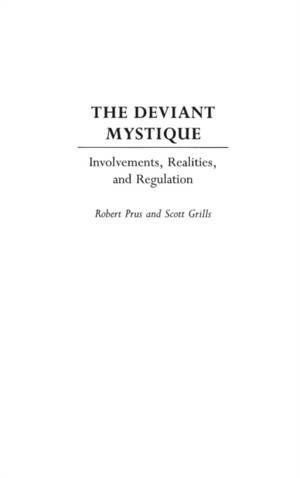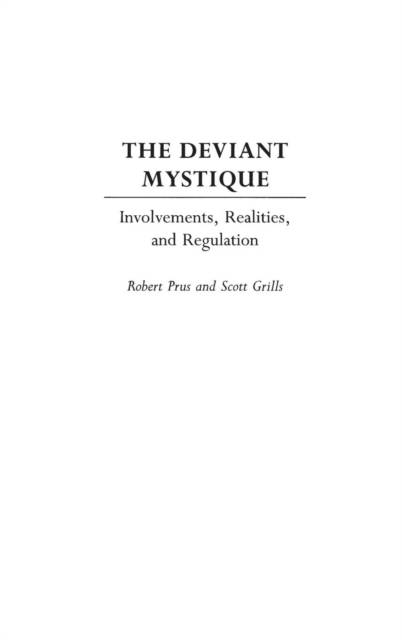
- Afhalen na 1 uur in een winkel met voorraad
- Gratis thuislevering in België
- Ruim aanbod met 7 miljoen producten
- Afhalen na 1 uur in een winkel met voorraad
- Gratis thuislevering in België
- Ruim aanbod met 7 miljoen producten
The Deviant Mystique
Involvements, Realities, and Regulation
Scott Grills, Robert PrusOmschrijving
Adopting a symbolic interactionist perspective and building extensively on the ethnographic research tradition, this book analyzes the mystique that often accompanies deviance by examining deviance as an ongoing feature of community life. Because deviance is approached in nonprescriptive ways, as a product of community interchange, the emphasis here is on the ways in which deviance is defined, engaged, and regulated. It is examined as the product of human association, as something that is generated by people as they interact with one another, assume viewpoints and initiatives, and try to influence and resist one another within the context of community life. Prus and Grills do not attempt to address various deviant behaviors; instead, they provide readers with a glimpse into how deviance is formulated, practiced, viewed, and treated.
Who defines deviance? Why? What are the effects of deviance on others? How do subcultures form? These and other questions are answered in this unique approach to the study of deviance. Providing a conceptually coherent framework for approaching the study of deviance as an ongoing feature of the human community, the authors pay special attention to the many theaters of operation in which people come together and engage one another with respect to morality and deviance. Recognizing that audience definitions of deviance are pivotal to community notions of reality and actual interaction, consideration is given to the interrelated processes of defining deviance, identifying deviants, regulating deviance informally and formally, and experiencing treatment and disinvolvement. This thoughtful consideration serves to shed new light on the mystique that has been created around ideas about deviance.Specificaties
Betrokkenen
- Auteur(s):
- Uitgeverij:
Inhoud
- Aantal bladzijden:
- 328
- Taal:
- Engels
Eigenschappen
- Productcode (EAN):
- 9780275978228
- Verschijningsdatum:
- 28/02/2003
- Uitvoering:
- Hardcover
- Formaat:
- Genaaid
- Afmetingen:
- 156 mm x 242 mm
- Gewicht:
- 630 g

Alleen bij Standaard Boekhandel
Beoordelingen
We publiceren alleen reviews die voldoen aan de voorwaarden voor reviews. Bekijk onze voorwaarden voor reviews.












